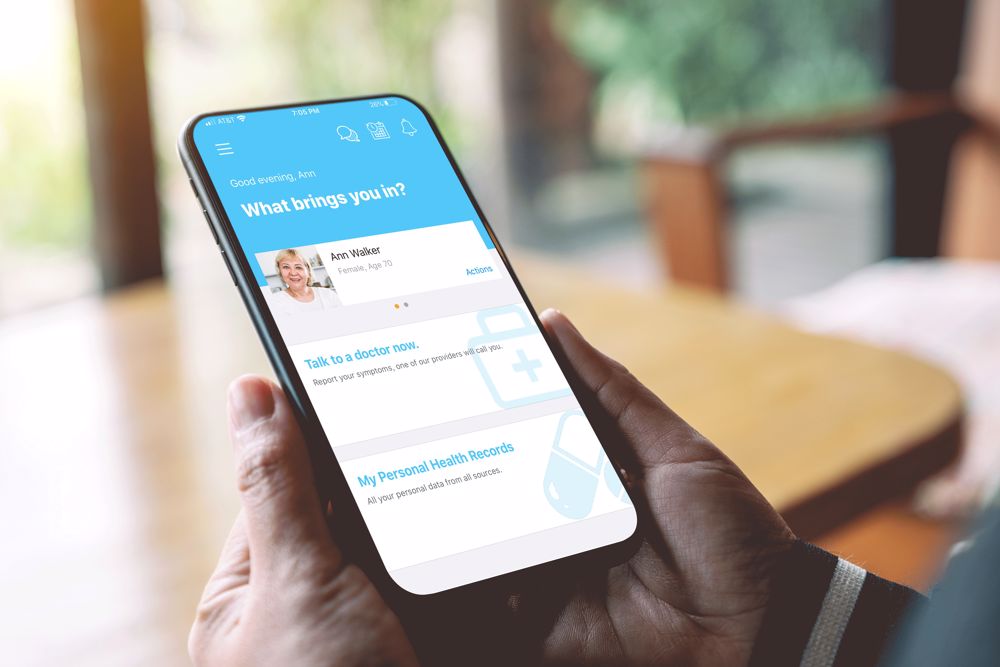As people looked for ways to avoid viral transmission during the COVID-19 pandemic, virtual care became a near necessity for healthcare organizations. The mass adoption of virtual care, telehealth and telemedicine solutions revealed to providers many of the benefits these programs can have both for them and their patients.
Even after the pandemic subsides, virtual care is expected to continue to be a core part of most healthcare organizations’ practice. In addition to improving the timeliness of care delivery and providing greater access to those living in more remote settings, virtual care might also drive down your operating costs.
Continue reading to learn more about virtual care and how it can benefit your patients.
Why do you need to offer virtual care to your patients?
Put simply, virtual care services are very popular among patients due to the range of benefits they offer. Their popularity will likely grow in the years to come, making virtual healthcare a must for your practice.
They’re popular among patients
Virtual care experienced a boom in popularity due to the spread of COVID-19. Although medical facilities remained open throughout the pandemic, concern over the transmission of the virus caused many people to stay home and seek health services from there.
One survey from Accenture and reported by FierceHealthcare found that more than 60% of patients who made a virtual visit to their physician during the pandemic would continue to do so after it ends. For healthcare organizations, giving each patient the option to schedule a virtual appointment in the post-pandemic world will be essential to meeting this demand.
The benefits for your patients
Virtual care provides a number of important benefits to your patients. One of the biggest is that it vastly increases the number of patients you can serve and gives greater access to patients who might not otherwise have easy access to healthcare services. This is especially true for those living in rural areas, where access to healthcare is limited by comparison to urban and suburban centers.
More than that, virtual care also gives patients the convenience of using your services from the comfort of their own homes or other settings outside your clinic. This was a huge advantage during the pandemic for patients who didn’t want to risk exposure. Even after the pandemic, patients who are suffering from some ailment might feel more comfortable receiving treatment without having to wait (or travel) for a face-to-face scheduled appointment at their doctor’s office.

Walk-ins become log-Ins
Given the situation, patients were forced to go online to receive their healthcare versus making an in-person visit. And now, according to a recent survey by Sykes, 87% of patients want to continue using telehealth services for non-urgent consultations after COVID-19 has passed.
Patients have seen and realized the following benefits of virtual care, now more than ever before. Over 85% feel telemedicine has made it easier to get the care they need and the majority have also been able to see their clinician more.
The differences between virtual care and telemedicine
The terms virtual care, telemedicine and telehealth are related, but not exactly the same, so it’s not correct to use them interchangeably.
Similar to telehealth, virtual care is a broad term that refers to any communication that takes place between the healthcare provider and their patients. It differs from telehealth, however, in that telehealth typically refers to any and all healthcare-related communications conducted over digital channels, whether or not they involve direct contact with providers.
Telehealth can also include virtual communications between different providers, whether through meetings, training or health education.
These definitions are still fluid and are constantly changing, but at this point in time, virtual care tends mostly to include meetings and consultation sessions, checkups and status reports between physician and patient.
By contrast, telemedicine is more specific and refers to a doctor engaging in a remote clinical examination and communicating with the patient to diagnose and outline a treatment plan via any number of digital channels. For that reason, telemedicine usually involves the use of medical devices and more direct, clinical communications between patients and providers.
How can virtual care benefit your healthcare organization?
Virtual care provides a number of benefits to your organization by helping you expand patient access to your services and meet the growing demand for virtual services.
Among providers that adopted virtual care strategies during the pandemic, their experience has been overwhelmingly positive. According to a survey conducted by the COVID-19 Healthcare Coalition, large majorities of these providers reported that:
- Patients responded favorably to virtual care programs.
- They give patients better access to care.
- There was an improvement in timeliness of care.
- It enables them to deliver better quality care for a range of services.
Some of these figures were higher for providers serving rural areas, highlighting the level of access virtual care affords people in more remote communities.
This survey also suggests an important financial benefit for both patients and providers. Around 61% of all respondents reported that telehealth improved the cost of care for patients, while 56% said that it improved the financial health of their practice.
Let AMD help get you started
The pandemic drastically changed the way patients interact with their healthcare providers and utilize their services. Keeping up with this trend means your healthcare organization needs to integrate virtual care into your existing service model.
To do this right, you need the right team of experts behind you. AMD Global Telemedicine has been a pioneer of technology used for telemedicine and an industry leader in telehealth solutions for the past 30 years. If you’re interested in learning more about AMD, our products or telemedicine technologies, contact us today and find out how we can help improve your telehealth program.





